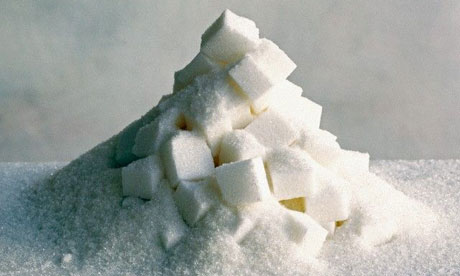By Claudia Colombo
The
face is like a mirror of the body and mind. Issues showing up on your
face can be indicative of much deeper issues. As the seasons change, you
may notice dry or red patches, blotchiness, or breakouts on your skin.
Blemishes
on your face don't pop up randomly, they can reveal a disharmony in the
body that gives you clues to what is going on internally.
Particular
areas of the face relate to certain organs, and each organ carries
carries a connection to one of the body systems. Whether it's acne,
rosacea, eczema, or hypersensitivity, most skin disorders have one thing
in common: inflammation.
Usually, distress in
one organ or area of the body triggers inflammation somewhere else in
the body but becomes most apparent in the skin. For example, congestion
in your face (such as white-spots, or hard, granular-like bumps under
the skin) or blotchy areas can be an indication of too much dairy
or sugar in the diet. Redness could be a sign of stomach acidity caused
by not enough digestive enzymes and an inappropriate diet.
The
degree of acidity significantly affects the body's own ability to
prevent illness, disease, and premature aging. A delicate balancing act
occurs in our bodies at all times, known as our PH balance.
If
our PH balance gets too acidic, we are more prone to illness. The
acidity prompts the immune system to respond negatively, creating more
of a workload for our body to protect itself. Highly acidic food,
smoking, hormonal imbalance, and a high-glycemic diet are the biggest
offenders. These stressors cause a free radical cascade fueling
inflammation internally and depleting our mineral reserves to neutralize
the acid.
In addition, glycation (a metabolic
process where sugar molecules bond to proteins and DNA causing
premature and wrinkles) becomes apparent from too much sugar or high
glycemic foods. Inflammation and glycation are two related reactions
that impact the body's natural state of balance and appearance of the
skin.
.
If you want, smooth and radiant skin, here are some tips to follow:
1. Combine food strategically.
Smart
strategies can cool down the excessive fire and inflammation in the
skin and body. For example eat fruit on its own, and avoid protein with
starch. Acid present in protein, which is made up of amino acids, blocks
the action of an important salivary enzyme necessary for proper starch
digestion and can result in gas and bloating.
Because
vegetables contain water and fiber (important for optimal digestion),
combining either animal protein or grains, if you choose to eat them, with vegetables is best.
2. Eliminate refined sugar and wheat.
These
increase inflammation and an acidic environment in the body. Cutting
back on sugar and wheat will support the organs of elimination and in
turn will increase your energy and skin clarity.
If
you've already cut out all refined sugar, continue to monitor your body
when you eat even a minimal amount of natural sugar. Sometimes even
fruit sugar will generate acne, because it feeds inflammation.
These
foods are full of beneficial bacteria and probiotics that help support
the body beyond digestion, reduce inflammation and keep yeast overgrowth
and pathogenic microbes in check that can trigger breakouts. They are
very potent detoxifiers,
capable of drawing out a wide range of toxins and heavy metals. If you
have poor digestion, it's' important to start incorporating these foods
into the diet slowly to ensure the gut has proper time to heal and
cleanse the body and the skin.
I recommend eating about a quarter to a half a cup of fermented vegetables, or cultured food such as raw yoghurt, per day. Kombucha,
a fermented drink, is another great addition. The greater the variety
of fermented and cultured foods you include in your diet, the better, as
each food will inoculate your gut with a variety of different
microorganisms.
4. Eat good fats.
Increasing
your Omega-3 fatty acids (EFAs) helps the body produce prostaglandins,
hormones that reduce inflammation. EFAs are responsible for skin repair,
moisture content, and overall flexibility, but because the body cannot
produce its own EFAs, they must be obtained through the diet.
The best places to find omega-3 fats include cold-water fish, organic coconut oil, krill oil, walnuts, Brazil nuts, chia seeds, flaxseed and sea vegetables.
5. Manage your stress.
When
we experience stress the body activates the “fight or flight” response,
which triggers stress hormones thereby slowing the digestive process
and compromising your digestion. Most of us are in a “fight or flight”
mode all day, which starts the minute our alarm goes off, starting the
days rushing around to get ready for work, check email, get the kids off
to school, etc.. and most likely skipping breakfast in the process.
This rushed behavior is stressful and shuts down our digestion
increasing acidity and more inflammation in the body.
To
effectively combat stress, we need to activate the body's natural
relaxation response and bring the nervous system back into balance.
Fitting in and finding the relaxation technique that's best for you can
help.
Activities like yoga, meditation and more exercise reduce everyday stress and boost your energy and mood. I recommend natural therapies like Acupuncture
or Kinesiology to identify and correct imbalances. Kinesiology
addresses the communication and connection between all systems and
enables you to clear the blocks or barriers so you can accomplish your
goals, tap into your inner resources and feel your best while providing
tangible results for your health.
6) Repair with antioxidants.
Antioxidants
neutralize free radicals and quench minor inflammation by sacrificing
their own life as a replacement for missing electrons around the cells. Antioxidants
also stop the cascade of destructive damage, since free radicals are
inescapable, we must have a constant supply of antioxidant nutrients to
keep our skin cells healthy.
In addition,
antioxidants may actually encourage our cells’ “fix-it” enzymes to
repair damage. Our cells have a wonderful ability to heal themselves,
but this mechanism works less efficiently as we get older. They also
provide histamine regulation. Consider ingesting and using the following
antioxidants topically adding a volume of antioxidant support.
- L-Ascorbic
Acid – (Vitamin C). The most effective form is in pure crystals. It
increases new collagen and increases the skin’s ability to heal.
- L-Superoxide
Dismutase- One of four major skin antioxidants, crucial for disarming
the most dangerous free-radical and superoxide radical.
- Coenzyme Q-10 (found naturally in our cells but decreases after age 20)
- Alpha-lipoic acid (ALA; found in plant and animal sources)
- Dimethylaminoethanol (DMAE; found in fish)
- Carotenoids (phytonutrients found in the red, yellow and orange flesh of plant leaves, flowers and fruit)
7. Supplement With Adaptogens.
They
are effective herbal tonics that can help handle stress by restoring
the body’s homeostasis when undergoing stress, which means they have the
ability to balance and stabilize the body’s systems (cardiovascular
system, nervous system, endocrine system, musculature, lymphatic system,
etc.)
They also possesses analgesic and
anti-inflammatory properties. Some of the most widely regarded
adaptogens you should consider are: Ashwagandha, Asian ginseng,
Cordyceps, Guduchi Holy Basil, Licorice, Reishi, Rhodiola, and
Schisandra.



 1. Artificial Colours
1. Artificial Colours 2. Bleached White Flour
2. Bleached White Flour 4. Artificial Sweeteners
4. Artificial Sweeteners 8. Sodium Nitrate And Sodium Nitrite
8. Sodium Nitrate And Sodium Nitrite

 A herb native to South American, stevia is 300 times sweeter than sugar. It
has been used as a sweetener for centuries in South America, and in
Japan, makes up 41 per cent of the sweetener market. So widespread is
its use, before Coca Cola decided to ‘standardise’ the recipe, stevia
was used in Japanese Diet Coke.
A herb native to South American, stevia is 300 times sweeter than sugar. It
has been used as a sweetener for centuries in South America, and in
Japan, makes up 41 per cent of the sweetener market. So widespread is
its use, before Coca Cola decided to ‘standardise’ the recipe, stevia
was used in Japanese Diet Coke.
 Raw
honey is used by many cultures as a remedy for many health ailments
including ulcers, digestion problems, and even seasonal allergies.
Studies have shown raw honey to have antibiotic, antibacterial, and
antimicrobial properties. Many people use honey topically on cuts and scrapes to help fight infection.
Raw
honey is used by many cultures as a remedy for many health ailments
including ulcers, digestion problems, and even seasonal allergies.
Studies have shown raw honey to have antibiotic, antibacterial, and
antimicrobial properties. Many people use honey topically on cuts and scrapes to help fight infection.  Lucuma
has a uniquely sweet, fragrant and subtly maple-like taste that will
bring your desserts to life without making your blood sugar levels
skyrocket. Lucuma is an excellent source of carbohydrates,
fiber, vitamins, and minerals. It boasts of plentiful concentrations of
beta-carotene, which makes lucuma a powerful immune system booster, and
it is rich in iron, B2 and B1.
Lucuma
has a uniquely sweet, fragrant and subtly maple-like taste that will
bring your desserts to life without making your blood sugar levels
skyrocket. Lucuma is an excellent source of carbohydrates,
fiber, vitamins, and minerals. It boasts of plentiful concentrations of
beta-carotene, which makes lucuma a powerful immune system booster, and
it is rich in iron, B2 and B1. 




